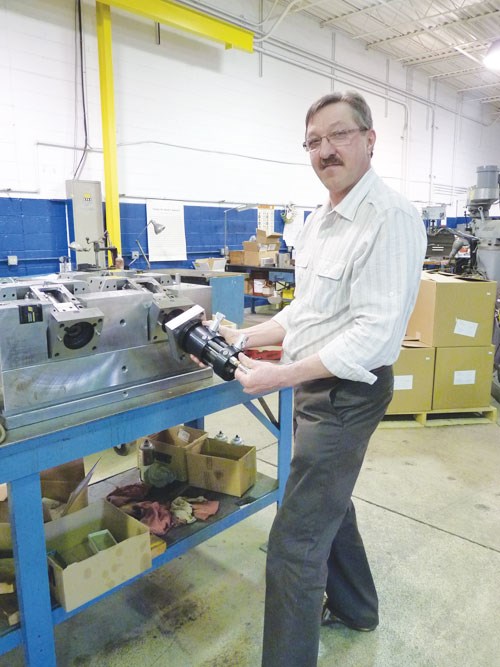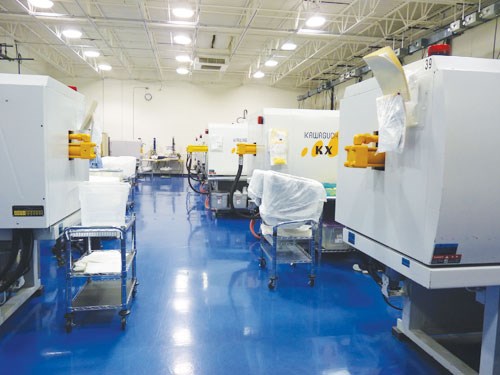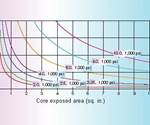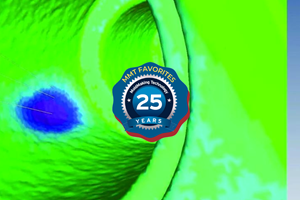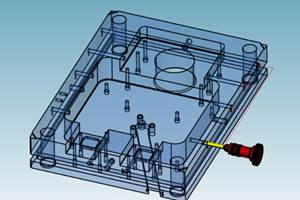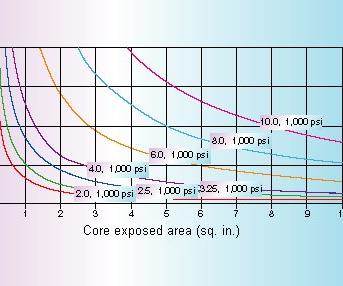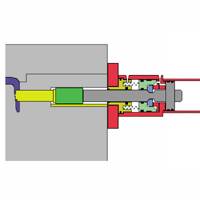Modular Side-Action System in Medical Part Molding Reduces Downtime, Cycle Times
Case Study/Mold Components, Medical.
When Star Die Molding Inc. (Elk Grove, IL)—an injection moldmaker/molder specializing in thermoplastic, thermoset and insert molds—was looking for ways to reduce cycle time, downtime and preventive maintenance—the company chose components manufacturer PFA, Inc (Germantown, WI) and the KOR-LOK® Side-Action System to address these challenges.
Founded in 1964 by John Petersen, Star Die Molding serves the medical device, electronics, agricultural and automotive markets with not only molding services but ultrasonic welding, heat taking, pad printing, ROHS/WEEE-compliant soldering, CNC/machining operations and assembly. “Plastic runs through our veins,” notes owner and VP Operations Johan Petersen. “We pride ourselves in fully engaging our customers to assist them in solving their challenges. The mold business is a game of singles and bunts—it is not a home run game. You sell a relationship and you sell value.”
Challenging Application
To offer a better product for its customer—a breast pump manufacturer— Andy Pietraszek, Star Die’s Tool Room Manager/Mold Designer, performed a formalized risk analysis to determine KOR-LOK’s value and application to this particular mold project. Star Die was pleased with the results. “The KOR-LOK’s flexibility frees up mold designers from all of the constraints they are used to dealing with,” Pietraszek explains.
According to PFA Vice-President/GM Mark Scanlan, the KOR-LOK Side-Action system provides large pre-loads and thermal compensation to core slides by the use of a dual-action, locking intensifier at the end of a stroke. The threaded housing supports the intensifier and the integral cylinder mechanism, and then transfers the load between the mold base and the core slide through a set and pull action. “To set the KOR-LOK, the rod is extended using extend pressure,” Scanlan explains. “As the slide contacts the stop at the end of stroke, the locking segments are forced into the rod groove by hydraulic pressure on the locking slide. As the segments are squeezed, the rod and slide are compressed forward against the stop under very high forces—removing flex and thermal size variations. The final locking slide movement activates the set sensor.
“During the pull action, retracting pressure forces the locking slide clear of the segments—allowing them to disengage as the rod and slide are pulled,” Scanlan continues. “When fully retracted, the rear pull sensor is activated.” He adds that when mechanical side actions are used, approximately one foot of mold base needs to be added as well as additional time to design the mold—which is not the case with KOR-LOK.
For the breast pump mold, Pietraszek used four KOR-LOK systems. “The KOR-LOK can pull at any time, at any angle,” he elaborates. “It is not a regular cylinder. It is free of platen movement; and has controlled pre-load stability, with on-the-fly adjustment. It can be adjusted in critical areas without having to take the mold apart—which results in less downtime. And, since the KOR-LOK is attached to the outside of the mold, a smaller mold base can be used. This means the mold can run in a smaller press—with less cycle time. Depending on the mold, it can be as much as 15 to 30 percent.”
The fact that KOR-LOK is modular is another advantage. For the breast pump mold, Pietraszek notes that there are four cavities to make four parts and four KOR-LOKs in these four locations. “It is a drop-in group of tooling,” he elaborates. “You drop the whole thing into the mold and run it. Since it’s modular you can drop it in anywhere. You can make back-up pieces so if something happens to one of the cavities, another one can be bolted on and the mold kept running.”
Petersen adds that Star Mold uses KOR-LOK for approximately 50 percent of is applications, and is pleased by the fact that it can be installed in any mold, adjusted quickly and be ready to run parts. “The entire core and cylinder can be swapped out in minutes,” he states. “We are very happy with the excellent cycle times—even with complex parts.”
A Team Effort
Petersen and Pietraszek agree that PFA’s customer service and support has been unbelievable. “We have never had any problems with the KOR-LOK, but any questions we had in the beginning were addressed immediately by PFA,” Pietraszek says. “They even stopped by and gave us detailed instructions for our specific application.
“We believe in teamwork, and PFA shares our philosophy,” Pietraszek continues. “We don’t have any problems—only challenges. Before we make any decisions we reach out to all of our experts—components, materials suppliers, etc. That information helps us to decide the best possible approach. The key for us is to use our suppliers’ expert knowledge. I like to think of it as a medley relay race since my children swim. This race has four different strokes, and each person is responsible for their own stroke—but together their goal is to achieve the quickest time. The same is true in building a mold. Each person is responsible for their own area of expertise. We also have a no-blame policy. If something happens there is no point in assigning blame. Instead, we determine the quickest and most effective way to fix it.”
Petersen adds to Pietraszek’s sentiments. “We love the KOR-LOK because it is a value-driven decision to install it on our molds,” he states. “It may cost a little more money to install it, but by giving us a smaller mold base and great longevity, we avoid a lot of maintenance costs and tool adjustment costs in the beginning—and through the life of the tool.”
Related Content
CT Scanning Helps Micro Molder Reduce Cost of First Article Inspections
CT scanning services performed by 3D ProScan, a division of NyproMold Inc. provides MTD Micro Molding with accurate, high-resolution internal and external measurements performed about seven times faster and at significant cost savings.
Read MoreIntegrated CAD/CAM Streamlines Electrode Manufacture, Improves Quality
A focus on electrode design and automation helps toolroom improve efficiency, reduce tooling costs and deliver higher quality products.
Read MoreCAM Automation Increases Mold Production, Quality
Mold builder switches CAM software package after 20 years to take advantage of innovative programming strategies that reduce mold machining programming and processing times.
Read MoreLaser Welder Yields Fast, Precise Mold Repair
Intralox's integration of the Alpha Laser ALFlak has significantly improved their tool room efficiency when it comes to difficult welds and urgent repairs.
Read MoreRead Next
Mold Side-Actions: How, Why and When They Work
Understanding the effects of injection on the core, slide and associated components is critical to selecting the best side-action methods for a given application. This first of two articles will discuss the basic physics underlying all side-actions.
Read MoreMold Side-Actions: Applications Rule the Action
With a firm understanding of the effects of injection on the core, slide and associated components, this second of two articles will discuss emerging modular technologies which provide alternatives to the limited solutions previously available.
Read MoreReasons to Use Fiber Lasers for Mold Cleaning
Fiber lasers offer a simplicity, speed, control and portability, minimizing mold cleaning risks.
Read More


